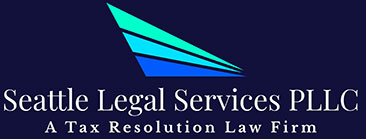Washington OIC: Rule 100 Settlements

When you owe a significant amount of money to the Washington Department of Revenue in the form of taxes, you are not in a position of power. To level the playing field, you need to quickly become aware of your obligations, rights, and legal options as a taxpayer of Washington state.
One option that might be available to you is resolving your back taxes through a 100 settlement. This arrangement is a similar tax solution as the IRS’s Offer in Compromise agreements, but it has slightly different rules and is made possible thanks to Washington State’s Rule 100(7).
Learn more about Rule 100(7) settlements, how to get started, and if it’s a good tax solution strategy to use in your situation below.
What is Rule 100(7)?
Under WAC 458-20-100(7), taxpayers who owe the Washington State Department of Revenue have the right to propose a compromise with a settlement offer.
In a nutshell, this proposal includes an offer from the taxpayer to submit a lump sum payment in exchange for a resolution to the debt problem. If the agreement is attractive, then the DOR will accept the agreement, officially sign the proposal, accept the payment, and resolve the tax debt balance to $0.
Rule 100(7) is beneficial for both the DOR and taxpayers. Taxpayers typically pay less than what they actually owe, and the DOR doesn’t have to continue investing time and resources into tracking down the payments they’re owed.
Washington DOR 100 Settlements: The Basics
Not every taxpayer who owes the DOR will be eligible for a 100 settlement arrangement. For instance, if you have had multiple run-ins with Washington’s DOR in the past, then the agency generally won’t accept a settlement deal. Instead, they may want you to pay what you owe in full.
You also won’t be able to get a settlement if your issue is being litigated by the DOR currently or when you are presenting issues that prevent you from getting relief through the 100 settlement option. You will be eligible for this type of arrangement when:
- There is a conflict between a rule, statute, and written instructions to the taxpayer.
- Following the law explicitly would have harsh consequences for the taxpayer.
- It’s unclear what the outcome would be if the issue was litigated in court.
Unfortunately, you can’t use a 100 settlement when you can’t afford to pay in full. This is in stark contrast to the IRS’s OIC program which is designed for people who can’t afford to pay. If you can’t afford to pay, the DOR suggests that you look into payment plans or other relief options.
How to Get Started on a 100 Settlement
Do you believe that your tax situation might make you eligible for a 100 settlement with the Department of Revenue? If so, your first step is to get a handle on your financial situation. You need to know how much you owe, what penalties you’re facing, and how much you’re willing to propose for a settlement.
Once you have that information, then you need to write a written settlement offer that includes:
- The amount of tax debt in dispute.
- An explanation as to why the DOR should settle your case.
- The amount you are proposing to settle your case.
- An explanation as to why the amount you’re offering is reasonable.
After writing this out, submit the information to the Administrative Review and Hearings Division.
How the Settlement Resolution Process Works
After you’ve sent off your official, written settlement offer, the Administrative Review and Hearings Division will evaluate the offer. The offer will either be referred to the settlement track, which means you’ll get contacted to discuss the offer further, or it will not be referred to the settlement track. Under those circumstances, you’ll be informed about the rejection.
Once you are contacted about the settlement, you will hash out the final details. The amount of tax you owe will be placed on hold while your settlement is under review. You may be asked to provide additional information to the Tax Review Officer in charge of your claim.
A closing agreement will be reached, but keep in mind that this oral agreement won’t be enforceable. You will receive a standard form from the DOR that outlines the official terms of your agreement. You and a representative for the DOR must officially sign this document before your dispute is considered officially settled.
What if Your Settlement Offer Is Rejected?
If your settlement offer is rejected, then you’ll be back to square one. Nothing will have been resolved, and you’ll still owe your tax debt. You can appeal the final decision, but you will need to do so within 30 days. Keep in mind that reaching a settlement is a discretionary decision for the DOR, so it will be difficult to reverse a decision they make regarding your settlement.
Can You Get a Rule 100 Settlement if You’re Unable to Pay?
If you are unable to pay your tax burden, then you may or may not be able to get a 100 settlement. If your inability to pay is the main reason for offering a settlement, then there is a good chance you will get rejected.
Rather than pursuing a 100 settlement, it would be better to contact the DOR’s Compliance Division. This department will discuss alternative options, such as a payment plan, penalty waivers, or other tax resolutions, that are more suited to your financial situation.
Is a Rule 100 Settlement the Right Way for You to Settle Your Washington Tax Debt?
Pursuing a 100-rule settlement might be the best way for you to resolve your tax debt, but you’ll need to consider your specific circumstances, the tax debt you owe, your alternative options, and more in order to make an informed decision on how to move forward with your tax debt. Below, we’ve provided a basic framework that should help you decide whether a 100-rule settlement is right for you.
Review Your Tax Obligations and Rights
First, get to know more about your tax obligations and your rights as a Washington taxpayer. You won’t be able to make an informed decision on how to handle your tax debts if you don’t fully understand the law, your obligations, or your rights as a taxpayer.
Research Your Options
Next, learn more about your options when you owe the DOR. A 100-rule settlement is only one type of tax solution available to you. Depending on your specific circumstances, you may be able to leverage other tax resolution strategies such as:
- Agreeing to a payment plan.
- Applying for penalty or interest waivers.
- Disputing the debt.
- Applying for a financial hardship exemption.
By weighing out these options, you’ll be in a better position to determine if a 100-rule settlement is the right way to go.
Consider Consulting With a Tax Professional
If you’re still not sure how to move forward with your tax debt, then consider consulting with a tax professional. A tax debt resolution law firm, for instance, can help you make a solid decision on how to move forward with your debts in a way that ensures you remain legally compliant.
Can You Get Multiple Rule 100 Settlements?
If you incur more tax debt after submitting to a 100 settlement plan, then the next tax issue will be handled separately from the first one. Keep in mind that the first time you applied for a 100 settlement plan, one of the criteria you had to meet was that your issue could not be recurring. In other words, if you have another tax issue pop up in the future, then you may not be eligible to qualify for another 100 rule settlement plan.
Contact Our Tax Resolution Law Firm Now
Some tax situations are more straightforward than others, but everything is always more complicated when you become delinquent on your taxes in Washington State. If you don’t take action or resolve your situation in a timely manner, then the DOR may decide to pursue collection efforts against you.
The good news is that every tax situation is resolvable — 100 settlements are only one of the options available to you. To learn more about your legal options and rights, it might make the most sense to consult with a tax professional. Here at Seattle Legal Services PLLC, we can help you determine the best path forward to resolve your taxes and remain on good terms with the DOR. To learn more, schedule a consultation with our team now to get started.
